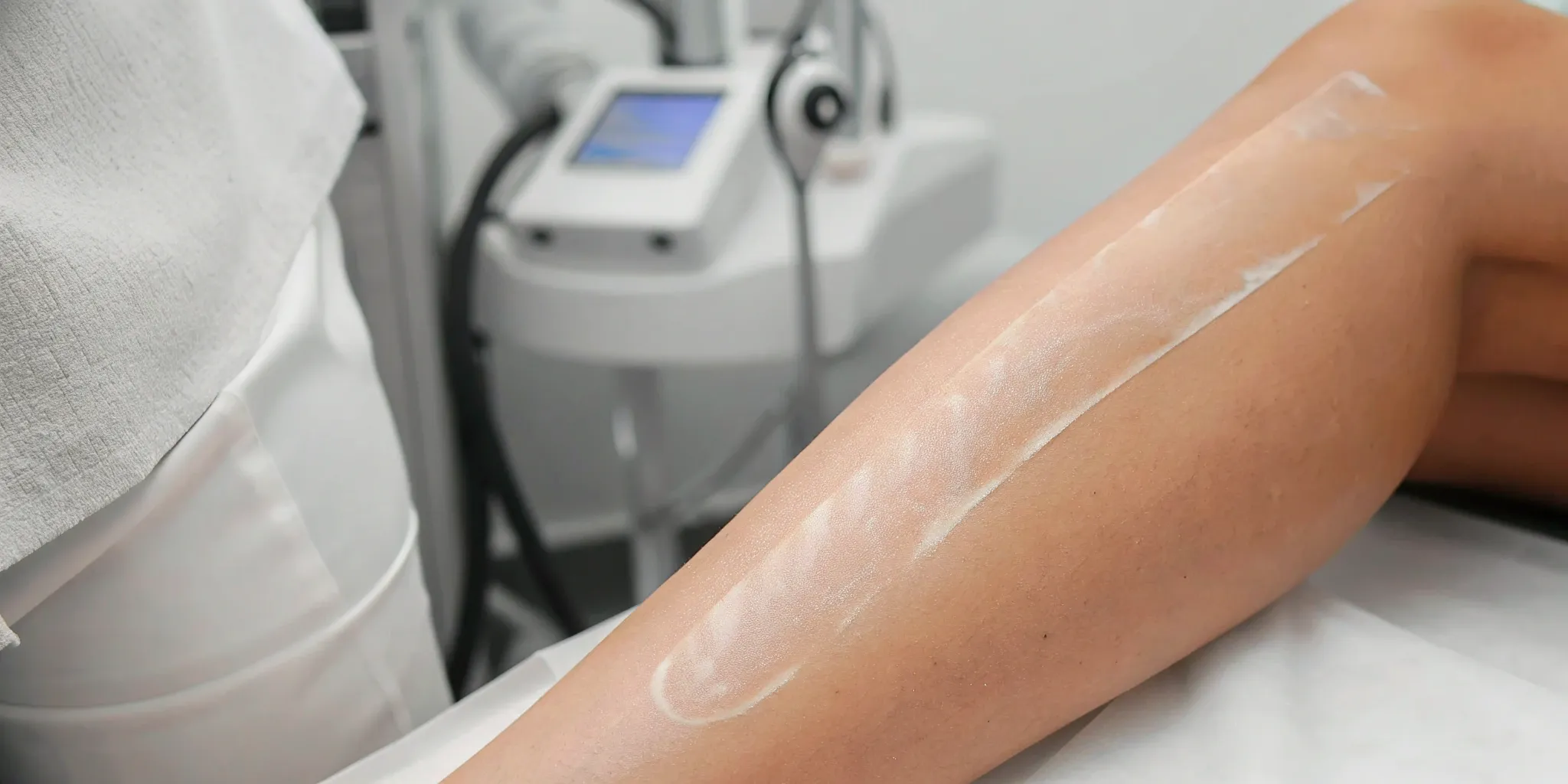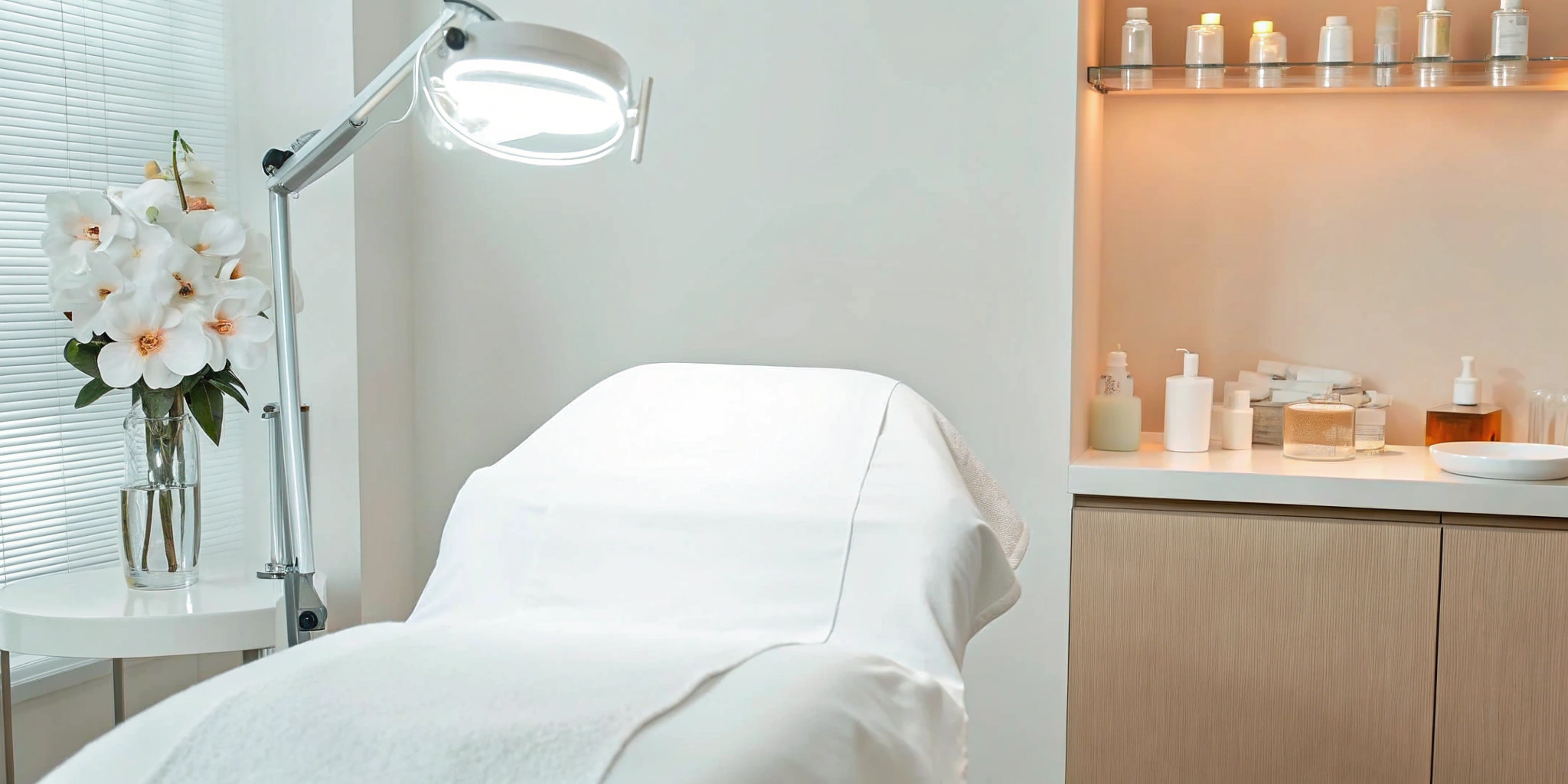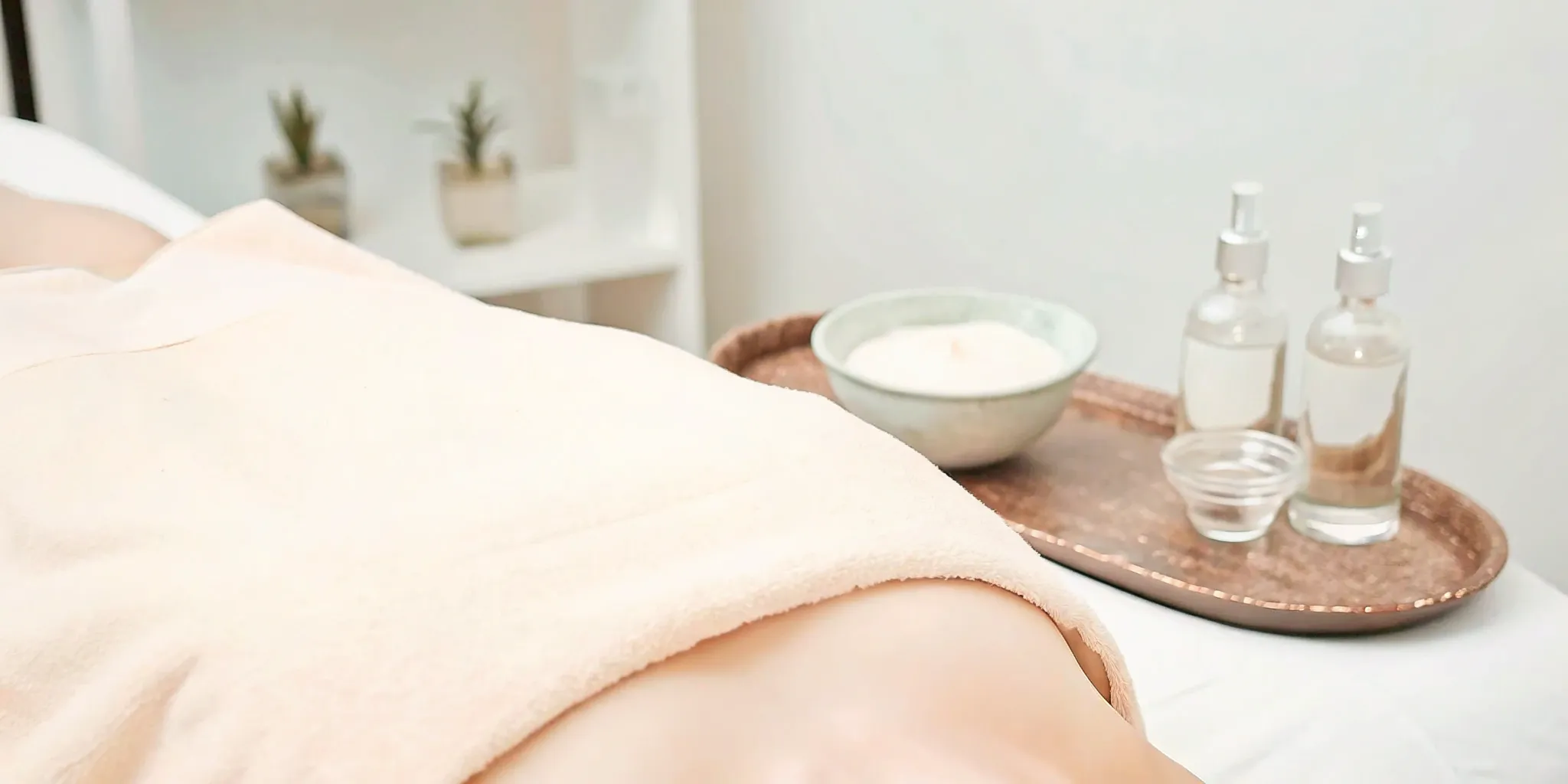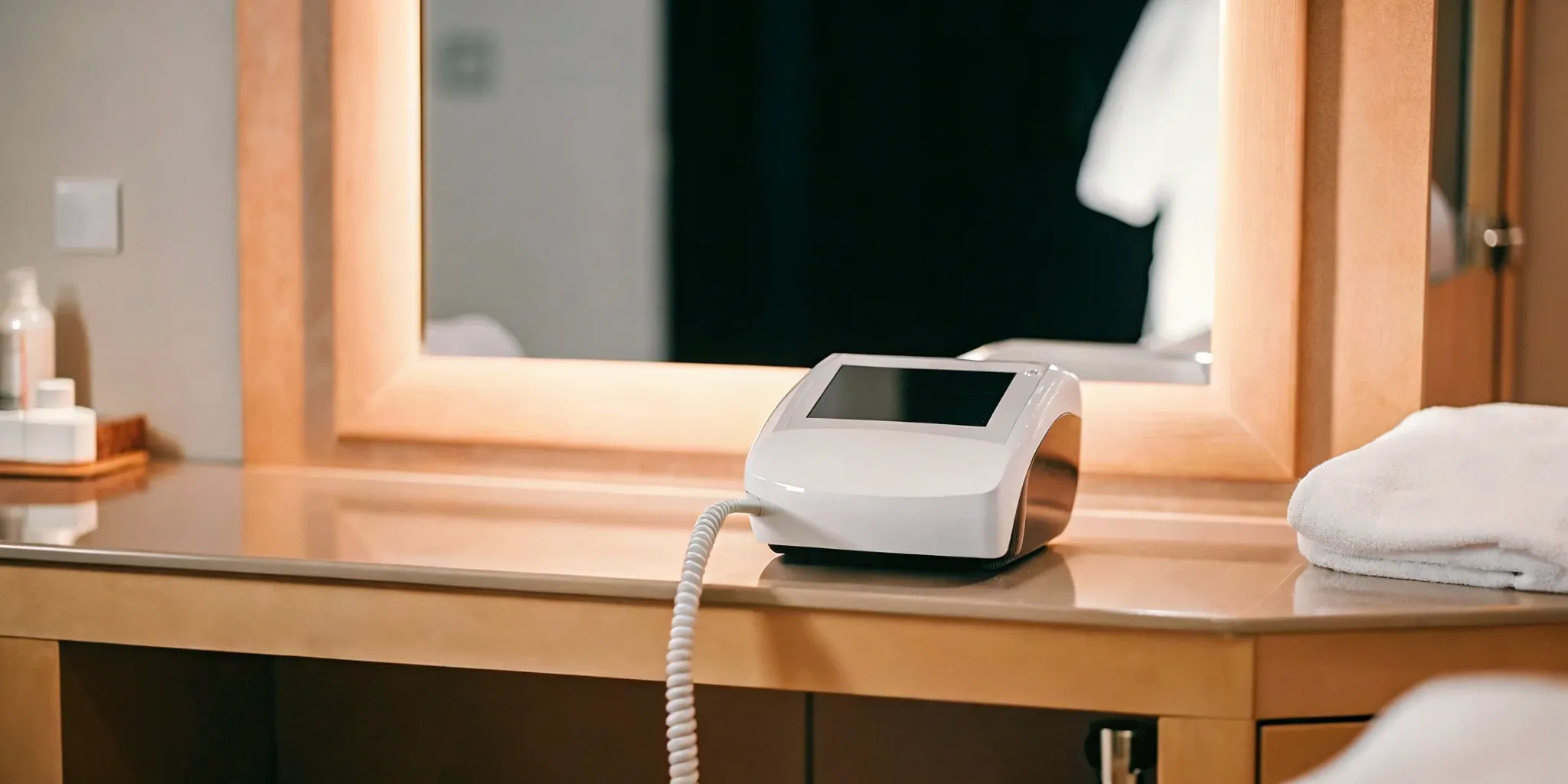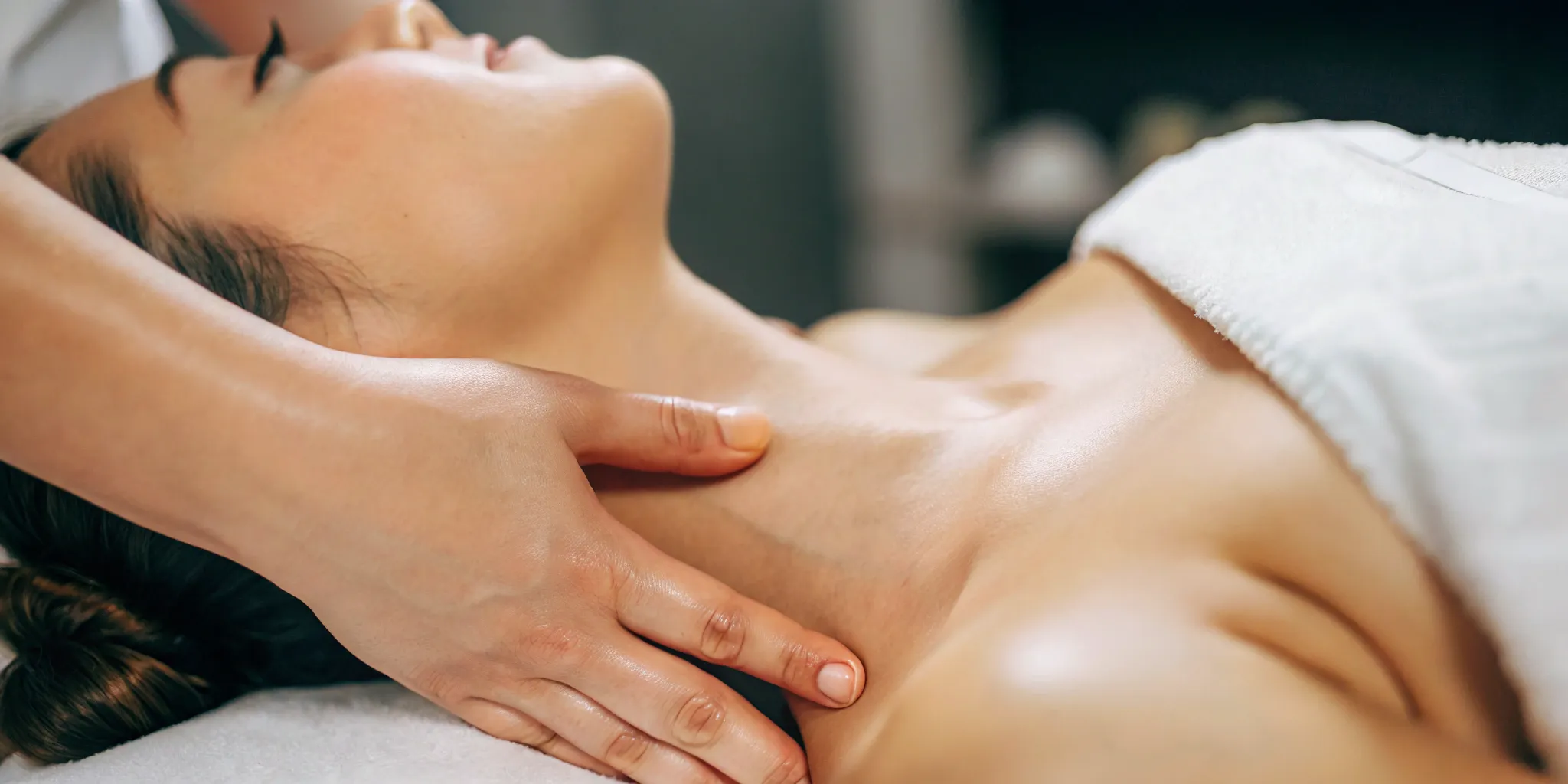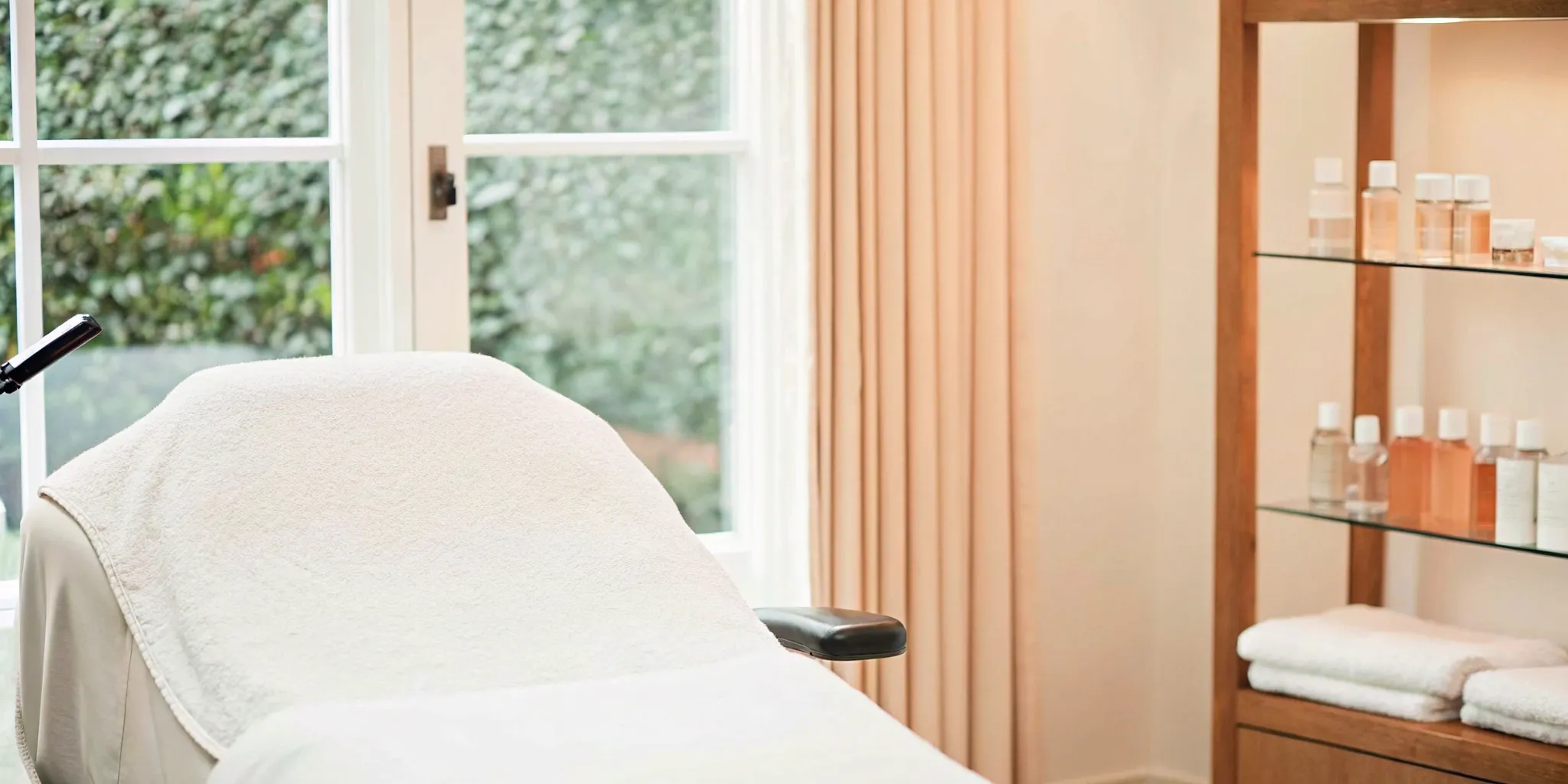The internet is full of conflicting advice on how to get rid of acne scars, from DIY remedies to miracle creams that promise the world. It’s easy to feel overwhelmed and unsure of where to turn for real results. The truth is, effectively treating indented scars requires more than just a topical product. It requires a strategic approach that often involves professional intervention to rebuild your skin from within. This guide cuts through the noise to give you a clear, expert-backed plan. We’ll explore powerful treatments like SkinPen Microneedling and explain how they work to create lasting improvements in your skin’s texture and tone.
Key Takeaways
- Pair professional procedures with a supportive home routine: The most significant improvements come from combining in-office treatments like microneedling with a consistent daily regimen of gentle cleansing, targeted ingredients, and non-negotiable sun protection.
- Adopt a prevention-first mindset: The best way to handle scars is to stop them before they start. This means managing active acne, keeping your hands off blemishes, and seeking professional help for persistent breakouts sooner rather than later.
- Work with a professional to create a custom plan: Your skin and scars are unique, so your treatment should be too. A personalized strategy that combines different therapies is the most effective way to address your specific concerns and achieve the best, safest results.
What Are Acne Scars?
If you’ve ever dealt with a serious breakout, you know the frustration doesn’t always end when the pimple disappears. Sometimes, it leaves a lasting reminder in its place: an acne scar. These scars can develop as a complication of acne, especially when deeper blemishes like cysts and nodules cause damage to the surrounding skin. When your skin is inflamed, its natural healing process can go off track, resulting in a permanent change in the skin’s texture.
It’s important to distinguish between a true scar and the temporary dark spots—known as post-inflammatory hyperpigmentation (PIH)—that often linger after a pimple heals. While those marks can be frustrating, they typically fade on their own over time. True acne scars, on the other hand, are permanent indentations or raised bumps that require a more targeted approach to treat. The good news is that you don’t have to live with them forever. With the right professional services, you can significantly improve your skin’s texture and regain your confidence.
The Main Types of Acne Scars
Not all acne scars look the same, and knowing which type you have is the first step toward finding the most effective treatment. Scars are generally categorized as either atrophic (depressed) or hypertrophic (raised). Most acne scars are atrophic and fall into three main types. Ice pick scars are deep, narrow pits that look like the skin was punctured. Rolling scars create a wave-like, uneven texture across the skin’s surface. Finally, boxcar scars are round or oval depressions with sharp, defined edges. Understanding your specific scar type helps professionals recommend the best treatments, like SkinPen Microneedling, which is excellent for stimulating collagen to fill in atrophic scars.
How Acne Scars Form
So, how does a pimple turn into a permanent scar? It all comes down to inflammation. When a pore becomes clogged with oil and dead skin cells, it can swell and cause a break in the follicle wall. If this break is deep, the inflammation can spill into the surrounding tissue. Your body rushes to repair this damage by producing new collagen fibers. If it produces too little collagen, a depressed or atrophic scar forms. If it produces too much, you end up with a raised, or hypertrophic, scar. Squeezing or picking at blemishes dramatically increases this inflammation, making scarring much more likely. This is why a hands-off approach is always best for preventing future scars.
Professional Treatments That Work
Sometimes, even the most diligent at-home skincare routine needs a helping hand to tackle stubborn acne scars. That’s where professional treatments come in. These services, performed by trained experts, can offer more dramatic and lasting results by working on deeper layers of the skin. They are designed to repair damage, stimulate your skin’s natural healing processes, and create a smoother, more even complexion. If you feel like you’ve hit a plateau with your progress, exploring these options with a trusted professional is the perfect next step. It’s all about finding the right tool for the job, and a medspa has a powerful toolkit.
Laser Treatments for Smoother Skin
Laser treatments are one of the most effective ways to address moderate to severe acne scars. Using focused light energy, these procedures work in two powerful ways: they remove the outer, damaged layers of your skin and they heat the deeper layers to kickstart new collagen production. This process helps break down old scar tissue and rebuild the skin from within, resulting in a significantly smoother texture. Advanced options like CO2 fractional lasers can precisely target scarred areas, promoting faster healing. A professional consultation can determine if laser resurfacing is the right path for your specific scars and skin type.
Chemical Peels and Microdermabrasion
Think of chemical peels and microdermabrasion as a major reset for your skin’s surface. A chemical peel uses a specialized solution to exfoliate the top layers of skin, which helps fade discoloration and reduce the appearance of shallower scars. Microdermabrasion offers a form of physical exfoliation, gently sanding away dead skin cells to improve overall skin texture. While they work differently, both treatments reveal the healthier, more radiant skin underneath. For a gentler but effective resurfacing experience, treatments like the HydraFacial also deeply cleanse, exfoliate, and hydrate the skin, contributing to a clearer and more even-toned complexion.
Microneedling for Collagen Production
If you want to encourage your skin to heal itself, microneedling is an incredible option. This treatment, also known as collagen induction therapy, uses a device with fine, tiny needles to create microscopic punctures in the skin. Don’t worry, it’s much more comfortable than it sounds! These controlled micro-injuries trigger your body’s natural wound-healing response, which includes a surge in collagen and elastin production. As your skin repairs itself, it fills in pitted scars and improves overall texture and firmness. We use the SkinPen for microneedling, the first FDA-cleared device of its kind, to ensure a safe and effective treatment for smoother, revitalized skin.
Dermal Fillers for Atrophic Scars
For certain types of scars, particularly atrophic or depressed scars that create pits in the skin, dermal fillers can provide an immediate improvement. This treatment involves injecting a gel-like substance, often containing hyaluronic acid, directly into the scar. The filler adds volume beneath the depression, lifting the skin to make it level with the surrounding surface. The result is a more even and uniform skin texture. While the effects are temporary, dermal fillers are a fantastic, minimally invasive option for instantly reducing the visibility of indented scars. A consultation with our experts can help you decide if this is the right solution for you.
At-Home Skincare for Acne Scars
While professional treatments are the fastest way to see dramatic improvements, what you do at home every day is just as important. A consistent, targeted skincare routine is your secret weapon for reducing the appearance of acne scars, supporting skin healing, and maintaining the beautiful results from your in-office procedures. Think of it as a partnership: we provide the powerful treatments, and you provide the daily care that helps your skin thrive.
The right at-home products can make a significant difference in fading discoloration, smoothing texture, and preventing future breakouts that could lead to more scarring. The key is to use ingredients that are proven to work. This includes chemical exfoliants that resurface the skin, powerful actives that promote cell turnover, and soothing natural ingredients that calm inflammation. Building a routine with these components will not only help with existing scars but also create a healthier, more resilient complexion overall. This daily effort is what makes professional services like microneedling even more effective in the long run.
Exfoliate with AHAs and BHAs
Regular exfoliation is essential for managing acne scars because it helps slough away the discolored and damaged surface cells, revealing the healthier skin underneath. Alpha Hydroxy Acids (AHAs), like glycolic acid, are fantastic for this. They work on the skin’s surface to lighten the dark spots (post-inflammatory hyperpigmentation) that often linger after a breakout. Beta Hydroxy Acids (BHAs), most commonly salicylic acid, go a step further. They are oil-soluble, meaning they can get deep into your pores to clear out debris and reduce the inflammation that makes acne and scarring worse. Using products with these acids can gradually smooth your skin’s texture and even out its tone.
Use Vitamin C, Retinoids, and Niacinamide
To really target scars, you need a few powerhouse ingredients in your corner. Retinoids are a gold-standard ingredient known to enhance cell turnover, which helps fade discoloration and improve the look of scars over time. Vitamin C is a potent antioxidant that not only helps brighten dark spots but also supports collagen production, which is crucial for filling in indented scars. Finally, niacinamide is a versatile B vitamin that works wonders on skin texture and tone, helping to calm redness and strengthen your skin’s barrier. Incorporating a serum with one or more of these actives can significantly improve your skin’s clarity and smoothness.
Helpful Natural Ingredients
While active ingredients do the heavy lifting, gentle, natural ingredients can provide amazing support for healing skin. Aloe Vera is a perfect example. Known for its incredible soothing properties, it can help calm inflammation and redness associated with both acne and the strong ingredients used to treat its scars. Applying aloe vera can also provide a dose of hydration and may help gently lighten scars over time, making it a great addition to your routine. Think of it as a calming hug for your skin, especially on days when it feels a bit sensitive or irritated from exfoliants or retinoids.
Create a Scar-Reducing Skincare Routine
While professional treatments are fantastic for making significant progress on acne scars, the work you do at home every day is just as important. Think of your daily skincare routine as the foundation that supports everything else. A consistent, thoughtful approach helps your skin heal, prevents new irritation, and makes professional procedures even more effective. It’s not about having a 12-step routine, but about using the right products correctly and consistently.
Building a solid routine prepares your skin for powerful treatments like microneedling and helps maintain your results long after you leave our spa. It’s your daily commitment to healthier skin. When your skin is properly cleansed, hydrated, and protected, it has the best possible environment to repair itself and reduce the appearance of scars over time. If you’re unsure where to start or which products are right for your specific skin concerns, we can help you build a personalized plan during a consultation.
Cleanse Gently and Exfoliate Smartly
The first step to any effective routine is cleansing, but it’s crucial to be gentle. When you’re dealing with scars, the goal is to support healing, not cause more stress to your skin. Use a mild cleanser and lukewarm water, and avoid harsh scrubbing or abrasive tools that can create micro-tears and inflammation. Consistent skincare is key, and that starts with a gentle touch.
Exfoliation is important for sloughing off dead skin cells and improving texture, but overdoing it can set you back. Instead of aggressive daily scrubs, consider incorporating chemical exfoliants like AHAs or BHAs a few times a week. For a deeper, safer exfoliation, a professional HydraFacial can cleanse and resurface your skin without the irritation of manual scrubbing.
Hydrate and Moisturize for Skin Repair
It’s a common myth that oily or acne-prone skin doesn’t need moisturizer. In reality, keeping your skin hydrated is essential for healing. When your skin is dehydrated, it can actually produce more oil to compensate, which can lead to more breakouts and interfere with the healing process. A good moisturizer helps maintain your skin’s protective barrier, keeping it balanced and resilient.
Look for non-comedogenic (meaning it won’t clog pores) moisturizers with ingredients like hyaluronic acid or ceramides. Applying moisturizer morning and night gives your skin the support it needs to repair itself effectively. This daily hydration is especially important when undergoing treatments like microneedling, which relies on your skin’s natural repair mechanisms to produce fresh, new collagen.
Protect Your Skin with Daily SPF
If you do only one thing for your skin, let it be applying sunscreen every single day. Sun protection is non-negotiable, especially when you’re trying to fade acne scars. UV exposure can cause post-inflammatory hyperpigmentation, which darkens existing scars and makes them much more noticeable. Daily sunscreen use prevents this darkening and allows your skin to heal more evenly.
Choose a broad-spectrum sunscreen with at least SPF 30 and apply it generously as the last step in your morning routine. This simple habit protects your investment in professional treatments and is a critical part of any scar-reduction strategy. It’s also a must after any laser procedure, including laser tattoo removal, to protect the treated, sensitive skin and ensure the best possible outcome.
Lifestyle Habits to Support Skin Healing
While professional treatments are the heavy lifters in scar reduction, your daily habits are the foundation for healthy, resilient skin. Think of it this way: treatments correct the damage, but your lifestyle helps your skin heal faster and maintain those beautiful results. What you do every day—from the food you eat to how much you sleep—plays a massive role in your skin’s ability to repair itself. By making a few simple adjustments, you can create an environment where your skin can thrive and recover more effectively from both acne and the treatments you use to address its aftermath.
Eat for Better Skin Health
You can genuinely eat your way to better skin. The foods you consume provide the essential building blocks your skin needs to repair tissue and build collagen. Focus on incorporating foods rich in vitamins and antioxidants, like leafy greens, berries, citrus fruits, and bell peppers. These powerful nutrients help fight inflammation and protect your skin from environmental stressors. A balanced diet also helps keep hormones in check, which can prevent the new breakouts that lead to more scars. Think of it less as a diet and more as fueling your skin’s recovery process from the inside out.
Manage Stress and Prioritize Sleep
If you’ve ever noticed a breakout appearing during a stressful week, you’ve seen the mind-skin connection in action. High stress levels can disrupt your hormones and slow down your skin’s healing process. Finding ways to manage stress is a powerful tool for skin health. Whether it’s through yoga, meditation, or just taking a quiet walk, find what works for you. Equally important is sleep. Getting seven to nine hours of quality sleep each night gives your skin the time it needs to regenerate and repair. It’s called “beauty sleep” for a reason—it’s when your body does its best healing work.
Stay Hydrated Throughout the Day
Proper hydration is non-negotiable for healthy, supple skin. When your skin is well-hydrated, it’s more plump and resilient, which can help soften the appearance of scars. Many people with oily skin shy away from moisture, but dehydration can actually cause your skin to produce even more oil to compensate, leading to more breakouts. The solution is simple: drink plenty of water throughout the day. Carry a reusable water bottle with you as a constant reminder. Keeping your body and skin hydrated supports cell turnover and helps your skin function at its absolute best.
How to Prevent New Acne Scars
While treating existing acne scars is effective, the best strategy is always prevention. Stopping scars before they even have a chance to form saves you time, money, and emotional energy down the road. The good news is that preventing new scars is entirely possible with the right approach. It all comes down to managing your acne effectively, keeping your hands off your face, and knowing when to call in the experts for support. Let’s walk through these key steps together.
Manage Acne to Stop Scars Before They Start
The most fundamental rule of scar prevention is this: no acne, no scars. The best way to prevent scarring is to get active breakouts under control. Every pimple is a site of inflammation, and severe inflammation is what damages your skin’s collagen and creates a scar. By minimizing breakouts, you reduce the risk. This starts with a consistent skincare routine tailored to your skin type, but it can also include professional treatments. Services like a HydraFacial can help clear congestion and maintain your skin’s health, making it less prone to the kind of deep, inflamed acne that leads to scarring. Think of it as proactive skin defense.
Adopt a “Hands-Off” Policy
I know how tempting it is to pick, pop, or squeeze a blemish. It feels like you’re helping, but you’re actually making things much worse. Adopting a strict “hands-off” policy is one of the most impactful things you can do for your skin. When you squeeze a pimple, you can push bacteria and pus deeper into the dermis, increasing inflammation and damaging the surrounding tissue. This trauma is a direct cause of scarring. The NHS confirms that picking at spots can lead to more severe and lasting marks. So, please, resist the urge. Your future skin will thank you for leaving blemishes alone to heal on their own schedule.
Know When to See a Professional
If you’re struggling with persistent breakouts or deep, painful cystic acne, at-home care might not be enough to prevent scarring. This is the time to seek professional help. An expert can properly assess your skin and create a personalized treatment plan to manage your acne and address any early signs of scarring. They can recommend the right combination of medical-grade skincare and professional services to get you the best results. For example, a series of microneedling treatments can help manage texture before it becomes a permanent issue. Don’t wait until the damage is done. If you feel like you’re losing the battle against breakouts, contact us to discuss your options.
Combine Treatments for the Best Results
When it comes to treating acne scars, there isn’t a single magic bullet. The most effective strategy often involves combining different treatments to tackle scars from multiple angles. Think of it like creating a custom toolkit for your skin. Different types of scars—whether they are pitted, raised, or discolored—respond best to different therapies. For instance, a plan might pair microneedling to rebuild collagen in indented scars with a series of gentle chemical peels to smooth surface texture and fade dark spots.
Achieving significant improvement is a process that requires patience and consistency, often taking six months or more. Your success depends on personal factors like your skin type, the age and severity of your scars, and how your skin heals. A combination of treatments is almost always more powerful than a single approach. By layering therapies, you can address texture, tone, and depth simultaneously, leading to smoother, clearer skin over time. This is why working with a professional to build a multi-faceted plan is so important for getting the results you want.
Develop a Personalized Treatment Plan
Your skin is unique, and your acne scar treatment plan should be, too. The first and most important step is to sit down with a skincare professional for a consultation. During this meeting, an expert can properly assess your skin, identify the specific types of scars you have, and listen to your goals. This isn’t a one-size-fits-all situation; the best approach for someone with rolling scars might be completely different from the ideal treatment for ice pick scars.
Based on this thorough evaluation, a specialist can design a personalized treatment plan just for you. This roadmap will outline which of our services will be most effective, the recommended sequence of treatments, and a realistic timeline for seeing results.
Why Professional Guidance Matters
Working with a professional isn’t just about getting better results—it’s about keeping your skin safe. Many effective scar treatments come with potential side effects, and an expert knows how to minimize these risks. This is especially important if you have a darker skin tone or a history of keloids, as some treatments may require special care. A trained provider will monitor your skin’s reaction and adjust the plan as needed to ensure your journey is both safe and successful.
We also understand that dealing with acne scars can be an emotional process. Having a supportive, knowledgeable professional in your corner can make all the difference. We’re here to guide you, answer your questions, and celebrate your progress every step of the way. Ready to start your journey? Contact us to schedule your consultation.
Set Realistic Goals and Track Your Progress
When you decide to treat acne scars, it’s easy to want instant results. But the journey to smoother skin is more of a marathon than a sprint. Setting realistic expectations from the start is the key to staying motivated and feeling good about your progress. The first step is always a professional consultation to create a treatment plan tailored to your specific skin type and scar patterns. During your visit, we can discuss what results you can realistically expect and how many sessions you might need.
It’s important to remember that many effective treatments, like microneedling, work by stimulating your body’s natural healing processes, which takes time. Some treatments offer subtle improvements that build up with each session. To really see how far you’ve come, I always recommend taking “before” photos in clear, consistent lighting. When you see your skin every day, it’s hard to notice gradual changes. Having a photo to compare against every month or so can be incredibly encouraging and helps you see the real impact of your efforts.
What to Expect from Your Treatment Timeline
Patience is your best friend when it comes to scar revision. While some treatments might show initial improvement within a few weeks, significant, lasting change often takes several months. Your skin needs time to remodel itself and build new, healthy collagen. For most professional treatments, you’ll need a series of sessions spaced about four to six weeks apart to achieve the best outcome.
Think of it as a long-term project for your skin. A single treatment can kickstart the process, but a full course is what delivers those transformative results. A typical timeline for noticeable improvement is often six months or more, especially when combining different services to address various types of scarring.
How to Monitor and Adjust Your Routine
As you move through your treatment plan, checking in on your progress is crucial. This is where those “before” photos come in handy. Every four weeks, take a new set of pictures in the same lighting to track your skin’s changes. This visual diary helps you and your provider see what’s working and where you might need to make adjustments.
Open communication with your skincare professional is essential. If your skin isn’t responding as expected or if you’re experiencing irritation, we can modify your plan. This might mean adjusting the intensity of a treatment, changing the frequency of your appointments, or tweaking your at-home skincare routine. Your journey is unique, so your treatment plan should be flexible enough to adapt to your skin’s needs along the way. You can always contact us to discuss your progress.
Your Acne Scar Questions, Answered
When it comes to acne scars, it feels like everyone has an opinion. From your well-meaning aunt to that random forum you stumbled upon at 2 a.m., the advice can be overwhelming and often contradictory. Let’s clear up some of the confusion and get straight to the facts so you can feel confident about your next steps toward smoother skin. Answering these common questions is the first step in creating a plan that truly works for you.
Common Myths About Acne Scars
First, let’s bust a few myths. The biggest one? That picking at your skin is harmless. It’s not. Squeezing or picking at blemishes is a primary cause of scarring, especially with more severe acne. Another common belief is that scars will just fade away on their own over time. Unfortunately, this isn’t true for indented scars; in fact, they can become more noticeable as our skin naturally loses collagen with age. While it’s also a myth that treatments can make scars vanish completely, the great news is that professional procedures can significantly improve their appearance, making your skin smoother and more even-toned.
Find the Right Treatment for Your Skin Type
Because everyone’s skin is unique, there’s no single magic wand for treating acne scars. The best approach is a personalized one. Professional treatments like SkinPen Microneedling are fantastic for stimulating collagen and rebuilding the skin from within. Other options, like laser treatments, work by breaking down scar tissue to reveal smoother skin. The key is to find what works for you. The most effective plans often combine different methods to address your specific scar types and skin condition. This is why getting professional guidance is so important—a specialist can assess your skin and help you build a treatment plan that will deliver the best possible results.
Related Articles
- Your Guide to Post HydraFacial Care – Ultimate Image MedSpa
- VI Peel Purify: The Ultimate Guide to Clear Skin – Ultimate Image MedSpa
Frequently Asked Questions
Is it ever too late to treat old acne scars? Not at all. While it’s true that newer scars can sometimes respond more quickly, it’s a common misconception that old scars are permanent fixtures. Professional treatments like microneedling and laser resurfacing are specifically designed to stimulate your skin’s deep repair mechanisms and remodel collagen, a process that works on scars regardless of their age. It might take a bit more patience, but significant improvement is absolutely possible for scars you’ve had for years.
Which professional treatment is the best one for my scars? There isn’t a single “best” treatment because the most effective approach depends entirely on you. Your specific type of scarring—whether it’s deep ice pick scars, wider boxcar scars, or wavy rolling scars—along with your skin type and history will determine the right course of action. This is why a one-on-one consultation is so important. It allows a professional to create a personalized plan that might involve one therapy or a combination of services to give you the best results.
Do professional treatments for acne scars hurt? This is a very common and understandable concern. Your comfort is a top priority, and most clients find these treatments to be very manageable. For procedures like SkinPen microneedling, a topical numbing cream is applied beforehand to ensure the process is as comfortable as possible. You might feel some minor sensations like warmth or pressure, but it’s generally not described as painful. We will always walk you through what to expect before we begin.
Can I get rid of my scars with just at-home skincare? A consistent at-home routine is essential for improving skin tone and texture, and it’s your best tool for preventing new scars. However, for existing atrophic scars, which are caused by damage in the deeper layers of your skin, topical products alone usually aren’t enough to fully repair the indentation. Think of it as a partnership: at-home care maintains your skin’s health, while professional treatments provide the power needed to rebuild collagen and truly smooth the skin’s structure.
How long will I have to wait to see a real difference in my skin? Patience is a key part of the process. While you might notice some initial improvements in skin tone and texture after your first session, significant changes take time. Treatments that stimulate collagen production are working with your body’s natural healing cycle, which can take several months to show its full effect. Most people see the most meaningful results after completing a series of treatments spaced four to six weeks apart.


